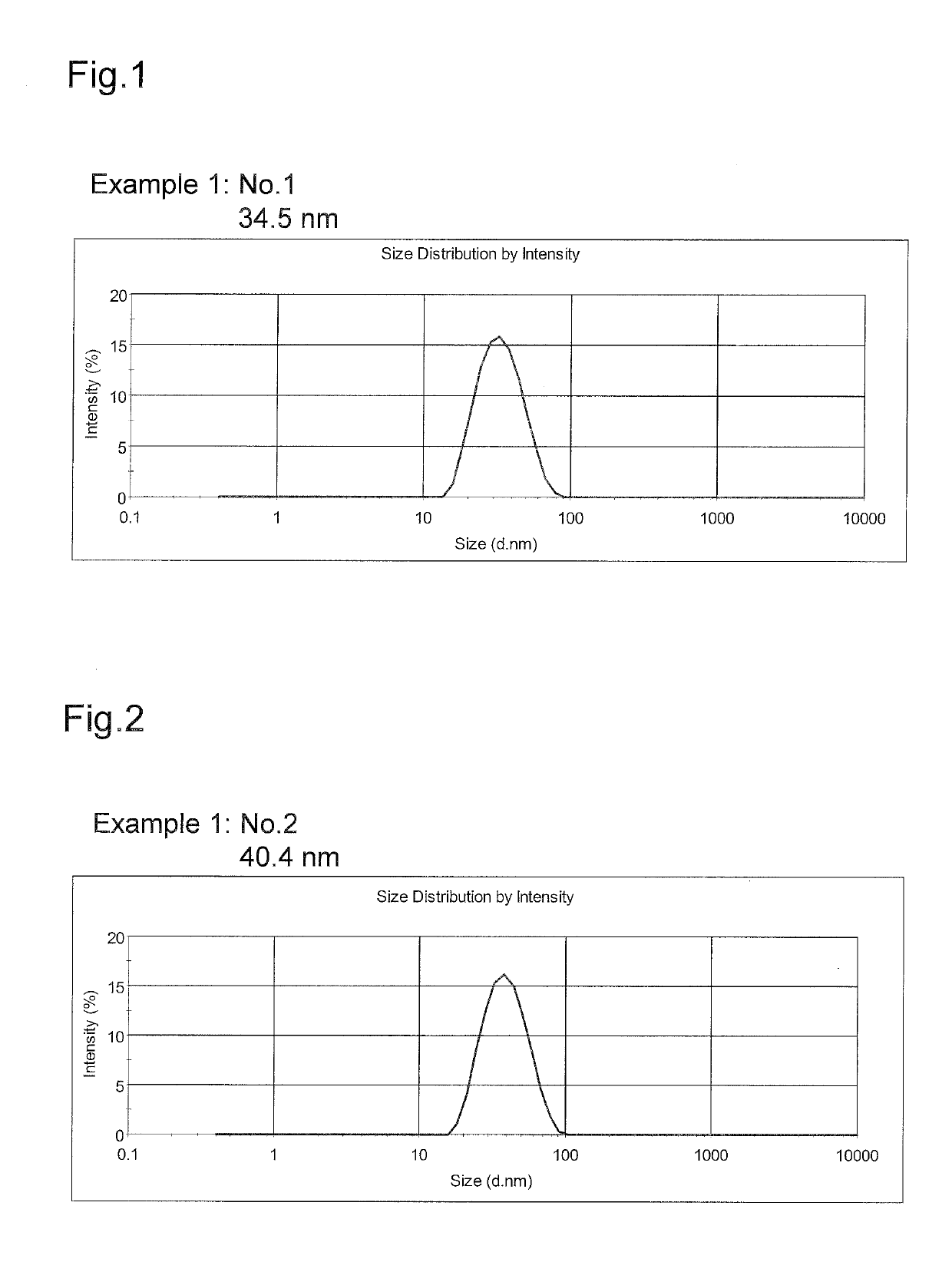Molecular assembly using amphipathic block polymer, and substance-conveyance carrier using same
a technology of amphipathic block and amphipathic core, which is applied in the field of amphipathic block polymer and substance-conveyance carrier using same, can solve the problems of brittle new blood vessels, limited life of indicators, and high diagnostic equipment costs, and achieves increased particle diameter of micelles, increased hydrophobic core volume, and longer chain length
- Summary
- Abstract
- Description
- Claims
- Application Information
AI Technical Summary
Benefits of technology
Problems solved by technology
Method used
Image
Examples
example 1
[0241]The amphiphilic polymer A1 (PSar63-PLLA30, or PSar66-PLLA315) and the hydrophobic polymer A2 (PLA0020, PLGA5005, or PLGA5010) were added to a test tube in amounts shown in Table 1 and dissolved in 1 mL of chloroform. The solvent was removed by evaporation under reduced pressure using an evaporator to form a film on the inner wall of the test tube. The evaporation under reduced pressure was performed for 45 minutes with a water bath at 40° C. Further, vacuum drying was performed (room temperature, 5 to 15 Pa, 2 hr), and then 2 mL of distilled water was added and warmed at 85° C. for 20 minutes to form particles. After the particles were formed, the solution was cooled until cooled to room temperature. In this way, A1 / A2 lactosome nanoparticles of No. 2 to No. 6 were obtained. Further, lactosome nanoparticles of No. 1 were prepared for reference in the same manner except that the hydrophobic polymer A2 was not used.
[0242]The particle diameters of the lactosome nanoparticles No. ...
PUM
| Property | Measurement | Unit |
|---|---|---|
| particle diameter | aaaaa | aaaaa |
| particle diameter | aaaaa | aaaaa |
| particle diameter | aaaaa | aaaaa |
Abstract
Description
Claims
Application Information
 Login to View More
Login to View More - R&D
- Intellectual Property
- Life Sciences
- Materials
- Tech Scout
- Unparalleled Data Quality
- Higher Quality Content
- 60% Fewer Hallucinations
Browse by: Latest US Patents, China's latest patents, Technical Efficacy Thesaurus, Application Domain, Technology Topic, Popular Technical Reports.
© 2025 PatSnap. All rights reserved.Legal|Privacy policy|Modern Slavery Act Transparency Statement|Sitemap|About US| Contact US: help@patsnap.com



